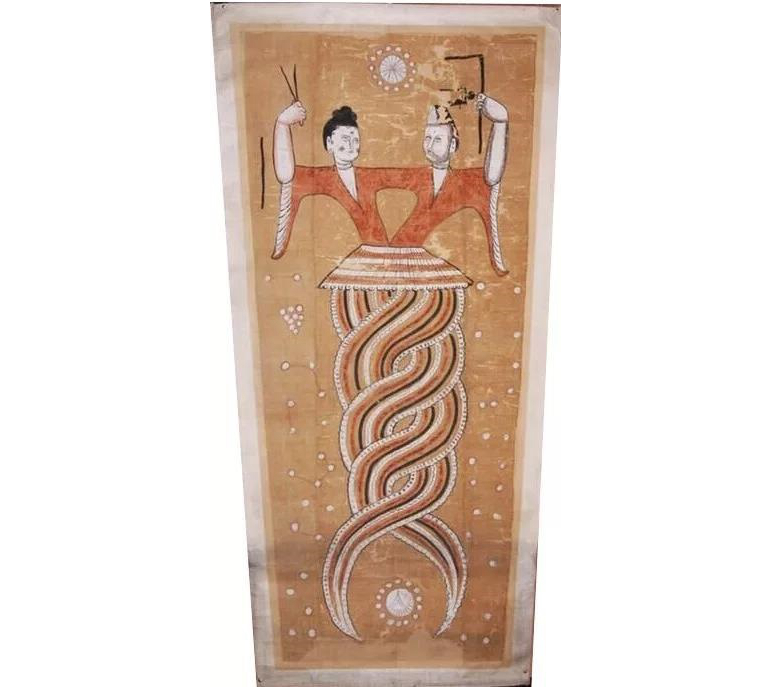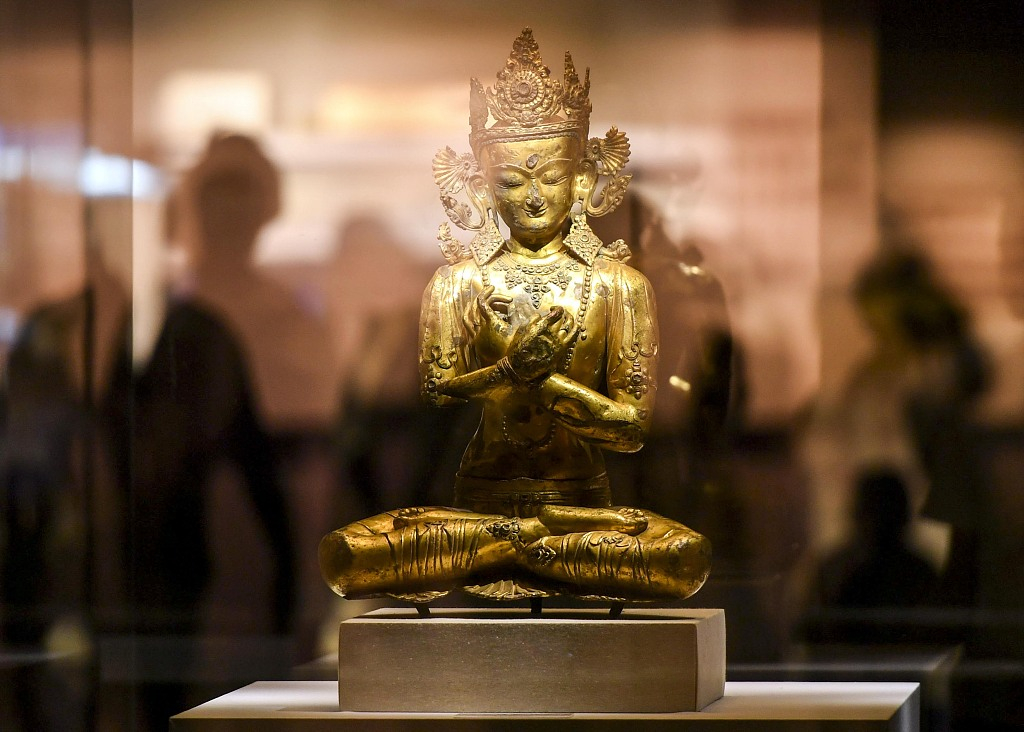

A poster for the exhibition of cultural relics unearthed in northwest China's Xinjiang Uygur Autonomous Region at the National Museum of China.
Cultural relics excavated in northwest China's Xinjiang Uygur Autonomous Region are on display at the National Museum of China, displaying an exotic showcase of the artifacts and antiques along the Silk Road.
The exhibition that opened on Tuesday showcases a total of 191 exquisite historical items from the pre-Qin period (pre-221 B.C.) to the Song Dynasty (960-1276) and the Yuan Dynasty (1271-1368).

A wide variety of cultural relics are being shown at the exhibition at the National Museum of China. /Photos via Souhu.com
It features a wide variety of exhibits, including potteries, metal works, wooden wares, glassware, embroideries, papers and Buddha statues. Among them are also historical documents and court materials.
One of the highlights is a renowned gold medal with a tiger pattern.
The medal was unearthed in an ancient tomb, which was situated in a mining area in the regional capital city Urumqi and discovered in 1977.

A gold medal with a tiger pattern is being shown at the exhibition at the National Museum of China. /Photo via Sohu.com
The late 1970s saw a series of discoveries of ancient tombs during the construction of the Nanjiang railway linking Turpan and Kashgar.
These findings drew much attention as a large number of burial objects made of gold and silver were excavated, including numerous gold medals and belts with tiger and lion patterns.
A land of cultural abundance
It is also noteworthy that a classical Chinese painting on silk featuring Fuxi and Nuwa – the primogenitors of the Chinese in mythology – will be on display at the exhibition.

A classical Chinese painting on silk featuring Fuxi and Nuwa is unfolded at the exhibition at the National Museum of China. /Photo via Sohu.com
This piece of work is in the spotlight as it was introduced in the second season of the hit TV show "National Treasures".
In fact, there are nearly 60 pieces of Fuxi-and-Nuwa silk paintings that have been unearthed in Xinjiang's Turpan Depression to date.
According to official statistics released by the regional cultural administration, archaeologists excavated 570 tombs, ranging from the Bronze Age and early Iron Age to around the Han Dynasty (206 B.C.-220 A.D.), in Xinjiang last year, where 5,500 cultural relics, mainly pottery, stoneware, metal works and animal bones were unearthed.

A statue is on display at the Xinjiang Museum in Urumqi, Xinjiang, China. /VCG Photo
The event, jointly held by the National Museum of China and the Xinjiang Uygur Autonomous Region Museum, is aimed at presenting the unique culture and customs of Xinjiang, and its significant position within Chinese culture as a stop on the Silk Road.
It combines multimedia technologies with the ancient cultural treasures to show a panorama of ethnic groups in the region, living together in harmony over thousands of years.
The exhibition will run through September 9.

Copyright © 2018 CGTN. Beijing ICP prepared NO.16065310-3
Copyright © 2018 CGTN. Beijing ICP prepared NO.16065310-3